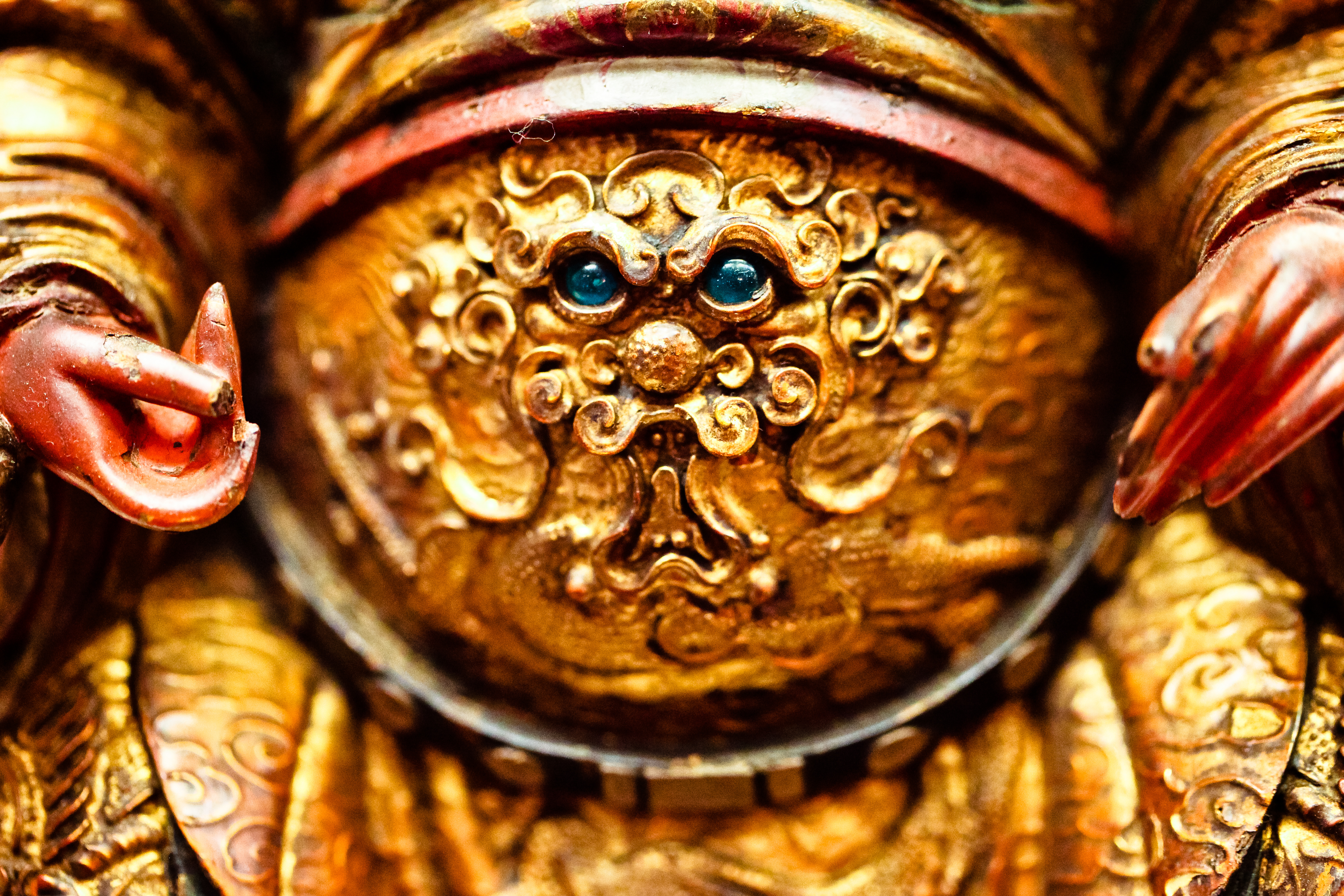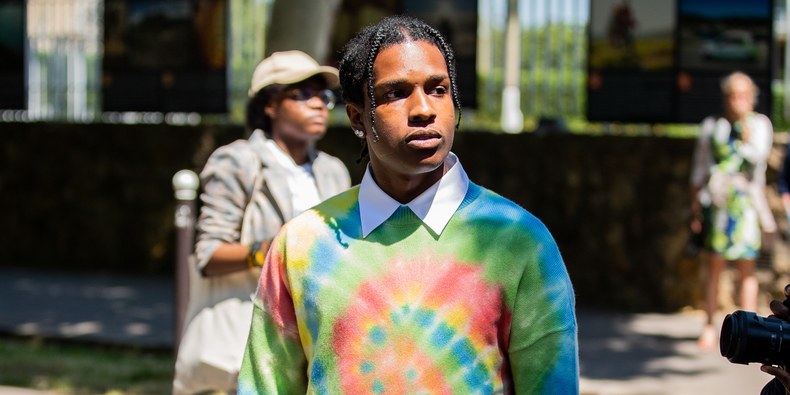During a rally in Fort Wayne, Indiana on May 1st, 2016, Republican presidential candidate Donald Trump argued that the United States “can’t continue to allow China to rape our country,” while discussing the two countries’ trade relations. Trump’s comments, as usual, were met by emphatic applause from his followers. Not surprisingly though, his choice of words was controversial and drew an equally emphatic response from his opponents. Scathing critiques abounded; some focused on how Trump was insensitive and trivialized the experience of rape victims, others focused on how Trump simply had his facts wrong on the countries’ trade imbalance. However, none pointed out how Trump’s use of the word rape to describe China’s actions toward the U.S. reflects historical notions of China (and Asia in general) as a “yellow peril,” a central theme of which was the symbolic sexual threat Asia posed to the United States.
The coining of the term Yellow Peril is generally credited to Kaiser Wilhelm II of Germany who, in 1895, had a dream in which he saw a Buddha riding a monstrous dragon, threatening to wreak destruction upon Europe. His supposedly prophetic dream was, however, not the first time Westerners had imagined threats emanating from Asia. Since the Mongol invasions of Europe in the 13th century, Westerners have held fears of being overpowered and overrun by cruel Asiatic “hordes.” John Kuo Wei Tchen and Dylan Yeats trace this centuries-old history of Yellow Peril in, Yellow Peril! An Archive of Anti-Asian Fear, and argue that even though the term itself has faded in use and significance, its meaning remains relevant today. Of course, American perceptions of China and the threat it may pose to the U.S. today are not identical to those of centuries past. Nonetheless, it is important to recognize the threads of Yellow Peril that remain in today’s society and challenge them.
In this vein, several scholars have traced and exposed the visceral language and images used in popular culture and media that have shaped Americans’ perceptions of Asians in the past. In, Romance and the “Yellow Peril”: Race, Sex, and Discursive Strategies in Hollywood Fiction, Gina Marchetti notes that, “the narrative pattern most often associated with Hollywood dramas involving the ‘yellow peril’ features the rape or threat of rape of a Caucasian woman by a villainous Asian man.” In such media, an act or threat of rape was meant to symbolize the threat that China poses to the United States. In his article, “Yellow Devil Doctors and Opium Dens: A Survey of the Yellow Peril Stereotypes in Mass Media Entertainment,” Gary Hoppenstand explains how “the threat of rape, the rape of white society, dominated the action of the yellow formula,” and that, the “British or American hero, during the course of his battle against the yellow peril, overcame numerous traps and obstacles in order to save his civilization.” Apply this metaphor to today and we see Trump trying to cast himself as the protagonist, the American hero who can save America from the Chinese villain.
To many Americans, particularly those who follow Trump, China poses a serious economic threat to the United States. In a narrative that fits within the Yellow Peril framework, Americans are threatened by a dishonest, deceitful China who is allegedly stealing American jobs, manipulating currency, and engaging in espionage and other “bad acts” – or, in Trump’s words, raping the honest and well-intentioned United States. In steps Trump, the only one who can “beat China” (Trump claims he beats China “all the time”) and “save his civilization.”
Trump’s anti-China and anti-immigration rhetoric parallels historical patterns of racism in the United States. The significant number of Trump supporters attests to the fact that such sentiments remain strong in U.S. society today. One may argue that Trump did not intend such a connection to historical Yellow Peril when making his comments, but whether consciously done or not, Trump drew from the wellspring of racialized and sexualized vocabulary employed to characterize the threat posed by China (and Asians) to the United States for over a century. Such conceptions and stereotypes are ingrained in American society and do not simply disappear.
During his speech, Trump not only argued that China was raping America, but he went so far as to claim that, “it’s the greatest theft in the history of the world.” Notwithstanding his penchant for grossly exaggerating, Trump’s claim fell in line with many of his previous comments that frame China as a shrewd dealmaker taking advantage of the United States. Akin to his rape metaphor, such references are steeped in traditional stereotypes of Chinese, in this case casting Chinese as smart but shady characters. Trump’s racial stereotypes do not stop there. During a speech in August 2015, Trump even used broken English to impersonate Asian negotiators who, according to Trump, start negotiations by shouting, “we want deal!”
To some, Trump’s antics may be comical, but the racist rhetoric he utilizes when referring to China and other non-white groups appeals to an audience that does not treat it as purely comical. For his intended audience, it is not a joke. Indeed, his rhetoric epitomizes what is wrong with America today and presents a way to, “make America great again.” Placing the Chinese trade imbalance within an old, but not extinct, Yellow Peril framework is but another example of how Trump’s platform of building walls, banning Muslims, and winning trade deals is appealing to the xenophobic and often racist side of a significant group of Americans.
As Americans have become more and more concerned with the political, military, and economic threat China poses to American global hegemony and domestic prosperity, leaders such as Donald Trump have increasingly appealed to American fears by evoking elements of deep-seated racism. Trump has been labeled a bigot, sexist, and racist, and has infuriated many Americans to be sure. But none can deny that he also has many loyal supporters who seemingly follow whatever he says and made him a legitimate presidential candidate. The point here is not actually Trump himself, rather, it is the fact that he utilized a central notion of Yellow Peril, and did so to the applause of his followers. This reveals that such rhetoric is effective in whipping up white supremacist American sentiments and characterizing “others” as a threat to the purity of America. While idealistic Americans may argue that such racism no longer plagues American society, Trump has clearly proven otherwise.
Of course, there are many who question, criticize, cringe at, and outright reject Trump. Yet despite his controversial comments and stances, or indeed, because of them, Trump has become a powerful voice in American society, representing the fears and anxieties that a significant group of Americans have regarding Chinese, Mexicans, Muslims, and others. It is important to reflect on the discourse used to characterize “others” and recognize the power it has to dehumanize and distort. Instead of brushing aside such discourse as laughable or extremist, we should acknowledge its deep historical roots, discern its presence in mainstream politics, and strive to tear down the walls that divide us rather than build them.
By Jordan DeWeger
- NOVAsia Is Hiring: Call For Applications and Contributors for Spring 2025! - February 26, 2025
- NOVAsia Is Hiring: Call For Applications and Contributors for Fall 2024! - August 20, 2024
- NOVAsia Is Hiring: Call For Applications and Contributors! - February 19, 2024






